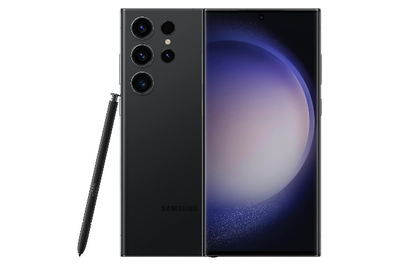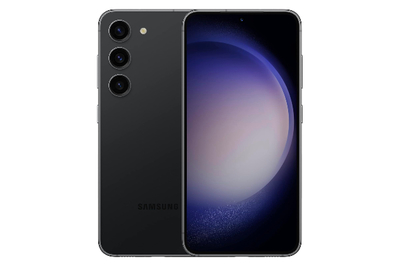Android phones can be found in a variety of sizes and price ranges, from inexpensive devices with small screens to pricey foldable models that can transform from a tablet to a phone.
After conducting extensive tests on Android smartphones, we’ve determined that the Google Pixel 8, which offers competitive pricing and impressive hardware, is the top choice for most individuals.
It delivers exceptional software and camera performance, and it is more affordable than other high-end mobile phones. Furthermore, it will receive guaranteed software updates for a longer period compared to most Android phones.
Our recommendation
The Pixel 8 offers the finest version of Android, with guaranteed security updates through fall 2030, and it has one of the best smartphone cameras we’ve ever tested. It also has excellent build quality and costs less than Apple’s latest iPhones.
Google’s Pixel smartphones have consistently provided the best Android software experience, and the Google Pixel 8 demonstrates that Google is further emphasizing its hardware. It boasts a sharp 6.2-inch OLED screen and a robust wrap-around aluminum frame. The Pixel 8 also delivers outstanding camera performance, second only to its sibling, the Pixel 8 Pro, and Google’s custom Tensor G3 processor competes well against the high-end chips in other phones. Additionally, the Pixel 8 is more likely to stay secure for several years longer than most Android phones due to its seven years of guaranteed monthly patches. At $700, it is priced hundreds of dollars less than other Android phones that won’t last as long or perform as well (though we are not fans of Google’s decision to across-the-board raise the prices of its latest Pixel models).
Premium choice
The Pixel 8 Pro takes the Pixel 8 and adds a bigger, better screen and more camera features, but it’s more expensive than previous Pro models.
The Google Pixel 8 Pro boasts a larger OLED screen with a higher resolution and refresh rate compared to the Pixel 8, as well as a 5x telephoto camera. These enhancements come at a higher price of $1,000, making it less cost-effective than the Pixel 8. However, the Pixel 8 Pro is a more capable phone with excellent software and seven years of update support.
Economical choice
The Pixel 7a has a higher price tag than Google’s budget phones typically do, but it offers more features for the cost. The 7a boasts a better display, an enhanced camera, Face Unlock, and Google’s custom Tensor G2 processor in a plastic body. It’s not as high-end as a flagship Pixel model, but it offers great value for the money.
Despite being hundreds of dollars cheaper than the Pixel 8, Google’s Pixel 7a doesn’t compromise on features. Running on Google’s Tensor G2 processor, it features an improved 64-megapixel camera sensor, wireless charging, Face Unlock, and an upgraded 1080p display with a smooth 90 Hz refresh rate. The Pixel 7a sports a plastic body, an aluminum frame, and a dual-camera setup on the rear, and it will receive many of the same Android 14 features as the higher-end Pixel models. The only downside is that the Pixel 7a will receive software updates for only five years, rather than the promised seven years for the Pixel 8 and Pixel 8 Pro.
Another ideal choice

The Galaxy S23 Ultra, with its fast processor, large screen, leading camera hardware, and stylus, is the most fully equipped Android phone available. However, it’s advisable to purchase it during a sale.
The Samsung Galaxy S23 Ultra boasts the largest and most vibrant screen of any smartphone, and the included S Pen allows for note-taking, document markup, and art creation in ways that can’t be replicated on any other phone. It offers the best build quality among all tested Android phones, featuring a custom aluminum-alloy frame that wraps around the edges and matte glass that repels fingerprints. The Galaxy S23 Ultra also sports the best camera hardware in a phone, including a 200-megapixel primary lens and a 10x “periscope” zoom. Its main drawback is its high price; for $200 less, the Google Pixel 8 Pro outperforms it in most aspects. The Galaxy S23 Ultra is perfect for those seeking maximum versatility from their phone, but it’s best to purchase it when it’s close to $1,000, or if you have an older Samsung phone to trade in.
Another excellent option

The Galaxy S23, equipped with the same powerful processor as the Galaxy S23 Ultra, is more user-friendly due to its compact frame and smaller display.
Most good Android phones are large and bulky, but the Samsung Galaxy S23 is compact enough for individuals with smaller hands. The 6.1-inch OLED display looks even better than the Google Pixel 8’s screen, and its build quality rivals that of the Galaxy S23 Ultra. It’s designed to last on the software front, too, with the same five-year update commitment as Samsung’s other flagship phones. While the Galaxy S23 lacks the advanced camera array of the Galaxy S23 Ultra, it still captures better photos than anything else that isn’t a Pixel. However, the smaller size means a smaller battery—the Galaxy S23 lasts a day, but just barely.









